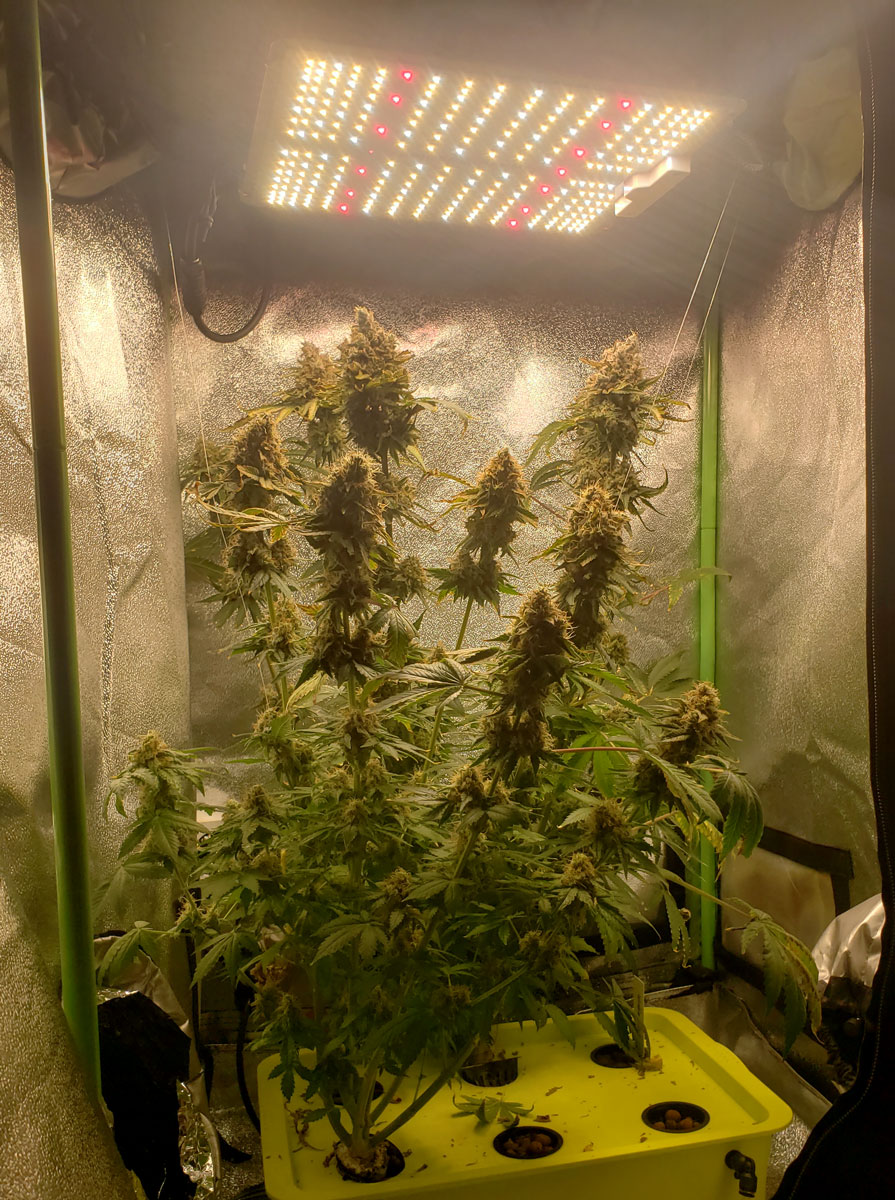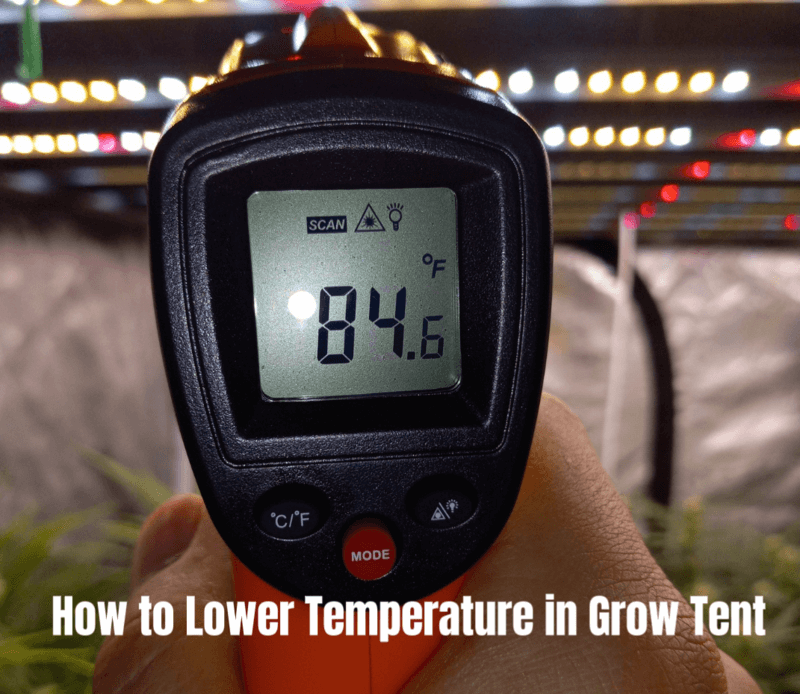To lower the temperature in a grow tent, improve ventilation and ensure proper air circulation. Consider using fans or an air conditioning unit for effective cooling.
Maintaining optimal temperature in a grow tent is crucial for plant health. High temperatures can stress plants, leading to stunted growth and reduced yields. Various factors contribute to heat buildup, such as lighting and equipment. Understanding how to manage these elements can create a more conducive environment for your plants.

Credit: www.reddit.com
Simple adjustments, like enhancing airflow and utilizing cooling systems, can significantly lower temperatures. This guide will explore effective strategies to help you achieve the ideal climate for your indoor garden, ensuring your plants thrive throughout their growth cycle. Let’s dive into practical solutions for maintaining a cool and healthy grow tent.
How to Lower Temp in Grow Tent : Step by Step Guide
Introduction To Grow Tents And Temperature Control
Grow tents create a controlled environment for plants. Temperature control is vital for growth. High temperatures can lead to various issues. These include stressed plants, reduced yields, and poor quality. Plants might wilt or show signs of nutrient burn. Some may even stop growing altogether. This can affect the overall health of your plants.
Common problems with high temperatures include:
- Wilting leaves that lose their turgor.
- Stunted growth due to stress.
- Pest infestations that thrive in heat.
- Mold and mildew from excess humidity.
Maintaining the right temperature ensures a healthy environment for your plants to thrive.
The Role Of Ventilation
Proper ventilation is key for maintaining a cool grow tent. Good air exchange helps lower temperatures. It also prevents humidity buildup. Without proper airflow, plants can suffer.
Choosing the right fans is important for cooling. Various types of fans can be used, including:
| Fan Type | Description |
|---|---|
| Oscillating Fans | They move air in different directions for even cooling. |
| Exhaust Fans | These remove hot air from the tent, keeping it cool. |
| Inline Fans | Used in ducting systems to boost air movement. |
| Clip Fans | Small and easy to attach, providing targeted airflow. |
Using a combination of these fans improves air circulation. This will help keep your plants happy and healthy.
Adjusting Lighting To Reduce Heat
Choosing the right lights is crucial for managing heat in your grow tent. LED lights are energy-efficient and produce less heat. CFL lights are another great option. They offer good light without overheating.
Optimizing light schedules helps control temperatures. Use shorter light cycles during hot days. Schedule lights to run at night when it’s cooler. This simple change can keep your tent at a safe temperature.
Remember to monitor the heat levels regularly. A thermometer can help you track temperature changes. Adjust light intensity based on the readings.
Water Cooling Systems
Water cooling systems help keep temperatures low in grow tents. They use water to absorb heat and cool down the air. This method is efficient and can save energy.
Basics of water cooling involve pumps, tubing, and radiators. The pump moves water through the system. Tubing connects all parts together. Radiators help release the heat from the water.
Setting up a water cooling solution requires careful planning. First, choose the right size pump for your tent. Next, install the tubing correctly to ensure good flow. Finally, place the radiator in a well-ventilated area for better cooling.
Air Conditioning And Portable Ac Units
Consider using air conditioning if your grow tent gets too hot. This helps maintain the right temperature for plants. Portable AC units are great for smaller tents.
Selecting the right AC for your tent is important. Look for units with high BTU ratings for better cooling. Energy-efficient models save money and energy.
Check the size of your grow tent before choosing an AC. A unit too small will not cool effectively. One too large may cool too quickly, causing temperature swings.
Keep your AC unit at a safe distance from plants. Direct airflow can harm delicate leaves. Regular maintenance helps the unit work well and last longer.

Credit: www.growweedeasy.com
Using Reflective Materials
Using reflective materials in a grow tent can help lower temperatures. These surfaces bounce back light and heat, which keeps the tent cooler. They can also improve light distribution for plants. This means healthier plants and better yields.
Choosing the right material is key. Mylar and white paint are great options. They reflect more light than other surfaces. Install them on walls and ceilings for the best effect. Make sure to cover all areas for even results.
Clean surfaces before installation. Dust can reduce reflectivity. Use tape or glue to secure materials properly. Check for any gaps, as these can let heat escape.
The Importance Of Insulation
Proper insulation is vital for your grow tent. It helps maintain a steady temperature. Different types of insulation can be used effectively.
| Type of Insulation | Description |
|---|---|
| Reflective Mylar | Reflects light and heat, keeping the tent cooler. |
| Foam Board | Provides excellent thermal resistance and is easy to install. |
| Bubble Wrap | Lightweight and effective for reducing heat loss. |
| Insulated Tarps | Blocks heat transfer and adds extra protection. |
To insulate your grow tent, start by sealing all gaps. Use weather stripping or tape for this task. Cover walls with reflective materials. This reflects heat and light efficiently. Adding thermal curtains can also help. They keep the heat in during cold nights. Monitor the temperature regularly to ensure optimal growth.

Credit: www.reddit.com
Monitoring And Automation
Keeping the right temperature in a grow tent is crucial. Use reliable temperature monitoring tools. These tools help track heat levels effectively. Some popular options include:
| Tool | Description |
|---|---|
| Thermometers | Simple devices to measure temperature. |
| Hygrometers | Measure humidity along with temperature. |
| Smart Sensors | Provide real-time data to your phone. |
Automating temperature control helps maintain optimal conditions. Use a thermostat to set desired levels. Fans and heaters can turn on automatically. This keeps your plants happy and healthy.
Consider smart home systems for advanced control. They can adjust the temperature based on readings. Regular checks ensure everything runs smoothly.
Frequently Asked Questions
How Can I Reduce Heat In My Grow Tent?
To reduce heat in your grow tent, ensure proper ventilation. Use exhaust fans to circulate air and remove hot air. You can also add intake fans to bring in cooler air. Additionally, consider using a portable air conditioner or ice bottles to help lower the temperature.
What Temperature Is Ideal For A Grow Tent?
The ideal temperature for a grow tent typically ranges from 70°F to 85°F (21°C to 29°C). Maintaining this range helps promote healthy plant growth. During the light cycle, aim for the higher end of this range. For the dark cycle, slightly cooler temperatures are acceptable.
Should I Use Fans In My Grow Tent?
Yes, using fans in your grow tent is essential. Fans help maintain proper airflow and reduce humidity levels. They also assist in distributing heat evenly, preventing hot spots. Oscillating fans can enhance air circulation, ensuring all plants receive adequate ventilation.
Can I Open My Grow Tent To Cool It Down?
Opening your grow tent can help cool it down temporarily. However, be cautious as this may introduce contaminants and change humidity levels. If you choose to open it, monitor the conditions closely. For consistent results, rely on ventilation and cooling systems instead.
Conclusion
Maintaining the right temperature in your grow tent is crucial for plant health. Implementing ventilation, using reflective materials, and adjusting lighting can make a significant difference. Regular monitoring ensures your plants thrive in optimal conditions. By following these tips, you’ll create an ideal environment for successful growth and bountiful harvests.

